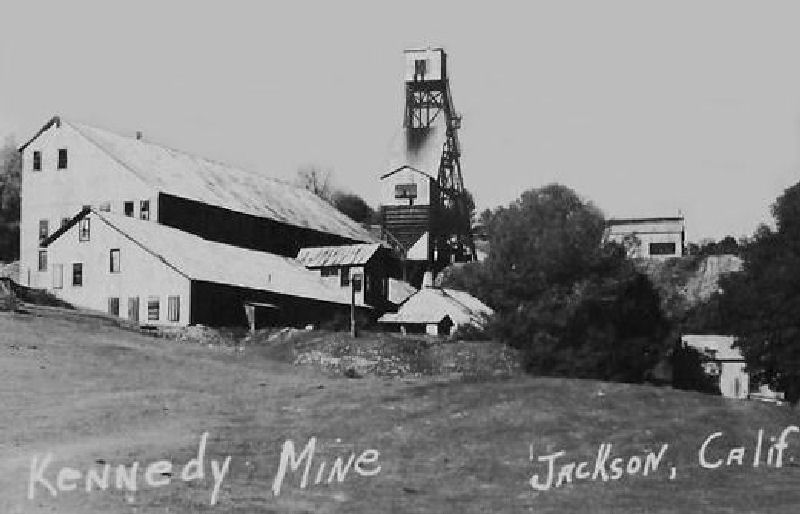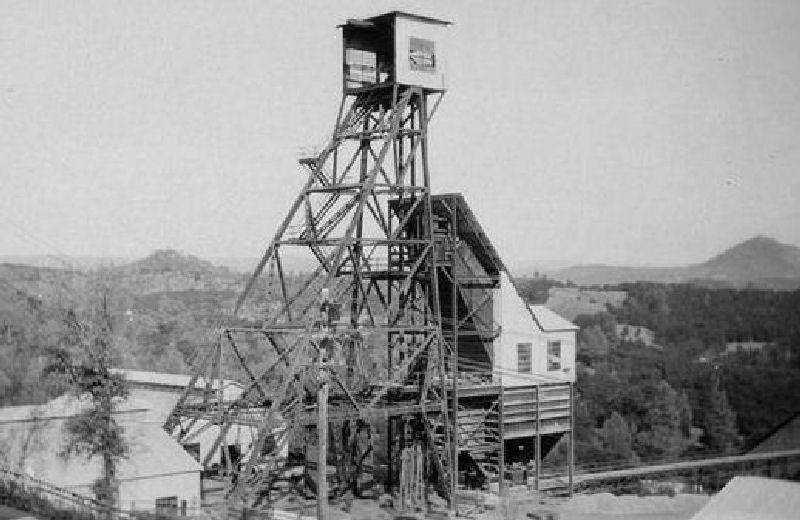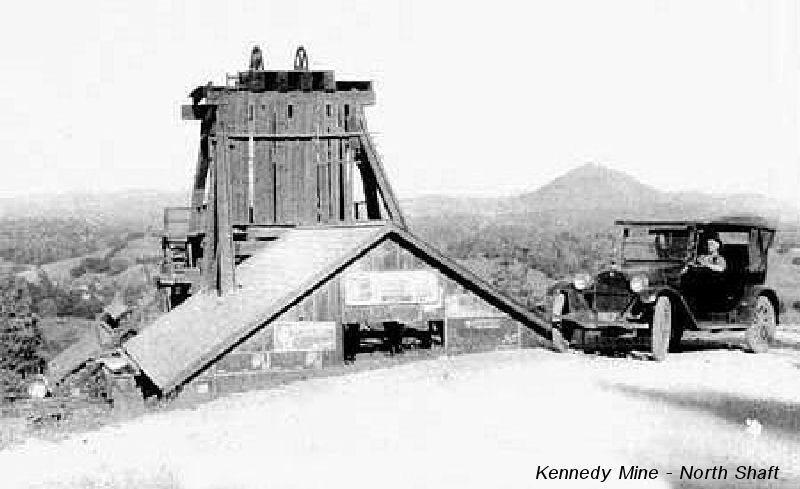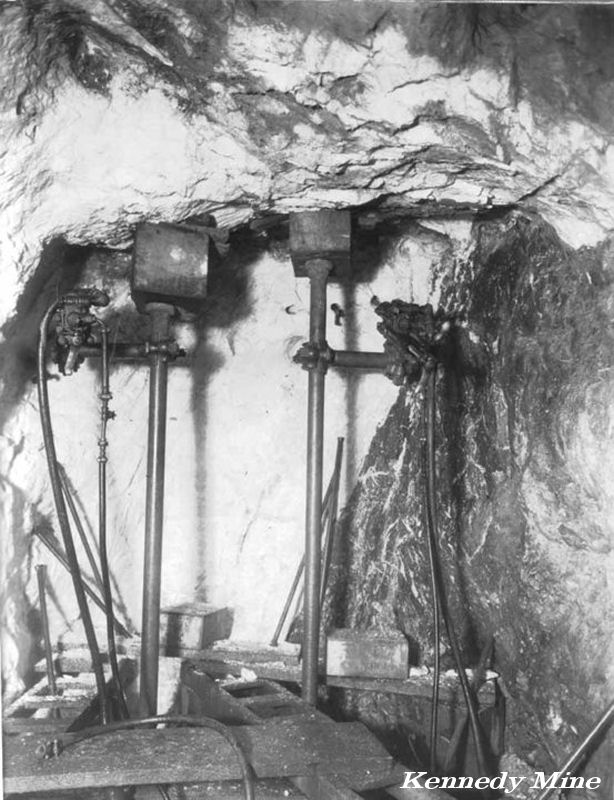





|
|
Kennedy Mine, Jackson, Amador County | ||
The Kennedy Mine is a little more than a mile northwest of Jackson and east Highway 49. The original claim was made in 1856 by Andrew Kennedy and since then has been Consolidated with several other claims. It was a minor operation until 1871, and was inactive between 1875 and 1885. From 1885 to its closing in 1942, the mine operated continuously, and on a major scale. The Kennedy was worked mainly through vertical shafts to a vertical depth of 5,912 feet, making it the deepest gold mine in the United States |
|
|
|
The Kennedy Mine is named for Andrew Kennedy, who reportedly discovered a quartz ledge in the late 1850s. The Kennedy Mining Company was formed in 1860 when he and three partners began digging shafts near today's mine property entrance. The mine operated sporadically until it closed in 1878. In 1886 fifteen people invested $97,600 to reopen the mine under the corporate entity of the Kennedy Mining and Milling Company. |
|
|
There are approximately 150 miles of underground tunnels, a great deal of surface equipment, which once included the famous Jackson Gate elevator wheels, and miles of flumes. The total production was $34,280,000. The Kennedy was closed in 1942 by order of the government while in full production. |
|
|
|
During its early years the mine was worked on a small scale using a whim for hoisting. In 1871 the first powered hoist and a twenty-stamp mill were erected. In 1872 the property was patented and by 1873 two promising ore shoots were being worked; the Kennedy on the north and the Pioneer at the south end of the mine, with 170 feet of the vein lying within the Kennedy property. It ras this 18-foot wide Pioneer vein that led into the Argonaut mine and was to be the cause of years of litigation between the two mines. Underground at the Kennedy Mine at the 4950 ft. level, south. Photo taken in 1931. |
|

| ||
Information, photographs courtesy of the Amador County Archives, The Historical Marker Database, and the Chronicling America Database |
||
|
|
||



